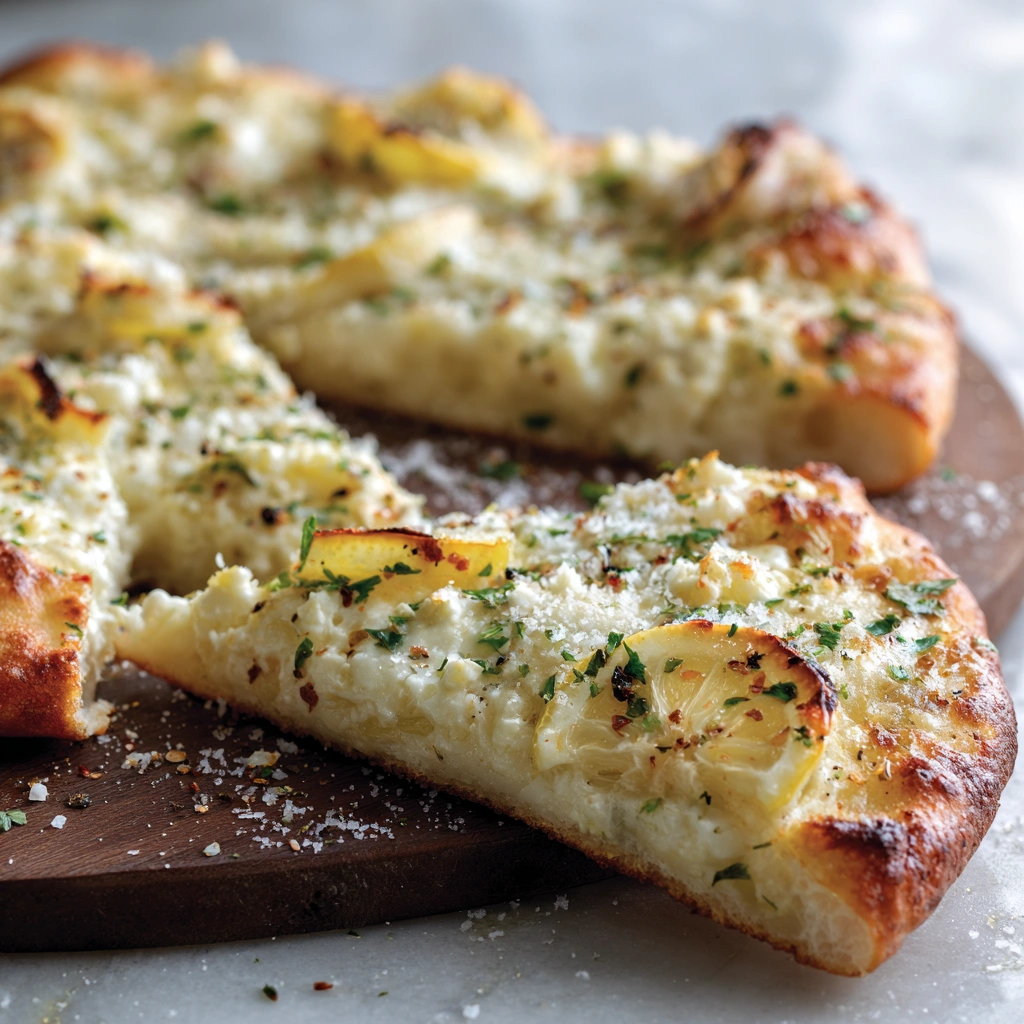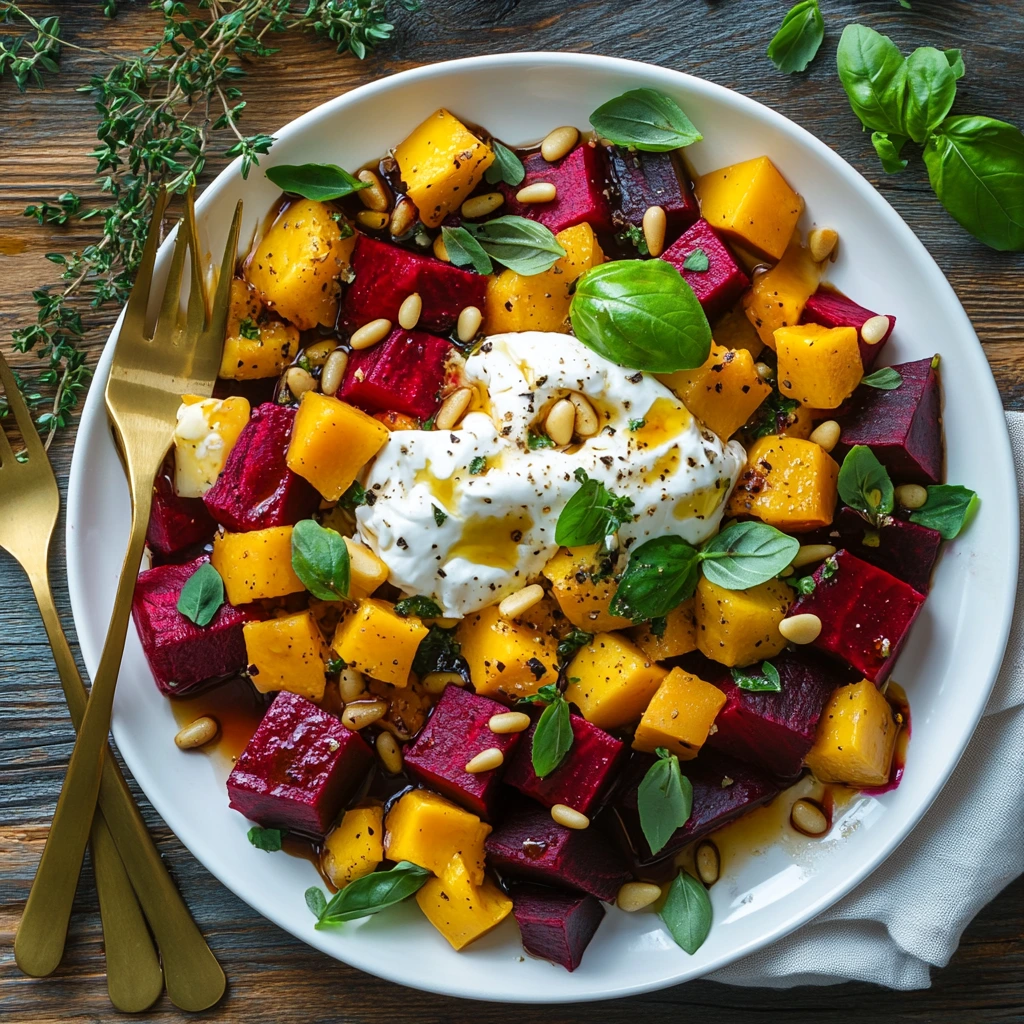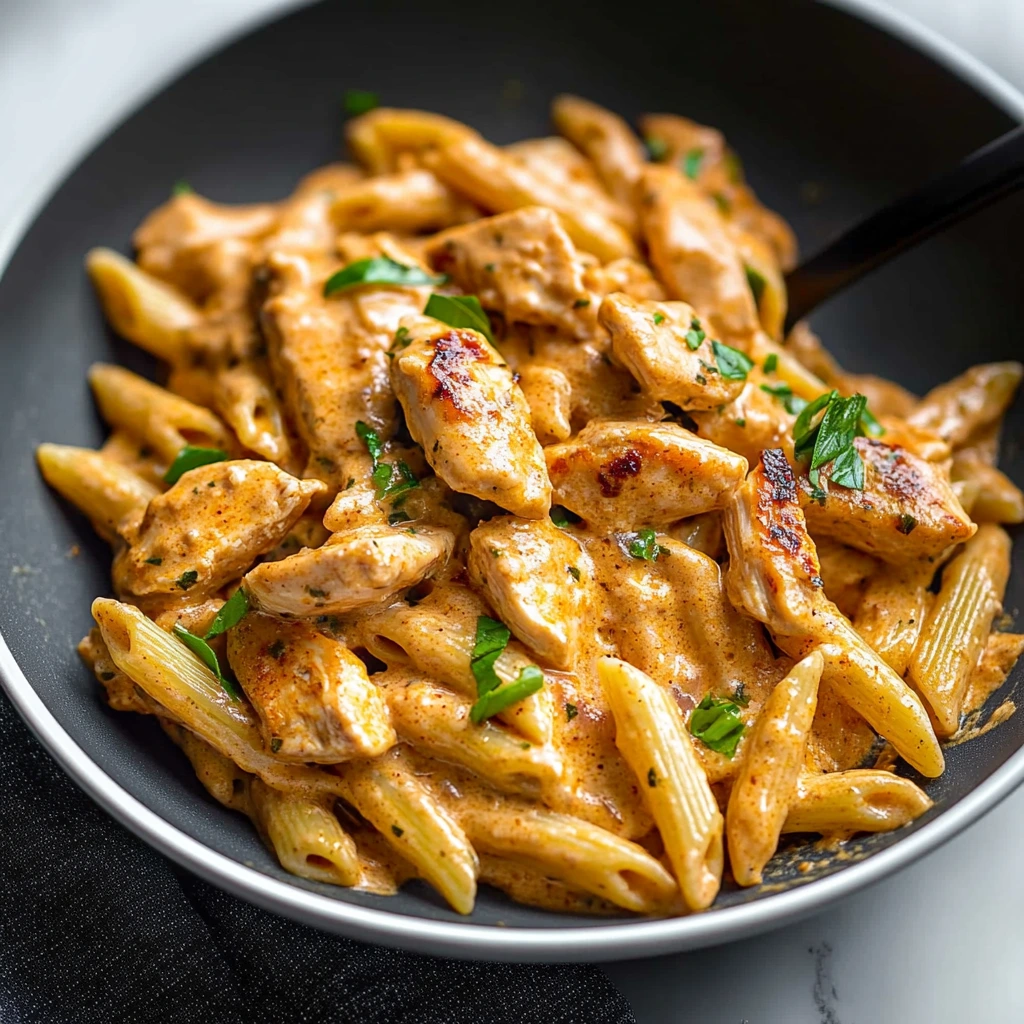Lemon pizza is a vibrant twist on the familiar Italian classic, combining the bright, zesty flavor of fresh lemon with the comforting warmth of a crisp, oven-baked crust. This unexpected pairing elevates the humble pizza into something light and refreshing, ideal for spring and summer gatherings. The acidity of the lemon cuts through the richness of melted cheese, creating a balanced bite that delights the palate. Home cooks and gourmet chefs alike have embraced lemon pizza as a canvas for creativity, experimenting with different cheeses, herbs, and crust styles. Whether enjoyed as a zesty appetizer, a main course for al fresco dining, or a unique party snack, lemon pizza brings a burst of sunshine to any table. Its growing popularity reflects a broader culinary trend of blending traditional recipes with unconventional ingredients to surprise and satisfy diners.
Origins and History
The roots of lemon pizza trace back to Mediterranean culinary traditions where citrus fruits have long been used to brighten stews, salads, and flatbreads. In Rome, pizza bianca—an unadorned, olive oil–drizzled flatbread—occasionally featured a squeeze of lemon juice or a sprinkling of zest, hinting at the flavor combination that would later flourish. As Italian immigrants brought pizza to California in the mid-20th century, innovative chefs began experimenting with local produce. The abundance of lemons in Southern California inspired pizzerias to introduce citrus-infused pies in the 1980s and ’90s. Food writers and gourmands soon celebrated these creations in cookbooks and magazines, cementing lemon pizza’s place in the modern artisan pizza movement. Today, this bright interpretation appears on menus from New York to Naples, showcasing how a simple twist can refresh a centuries-old dish.
Key Ingredients Breakdown
A successful lemon pizza depends on harmony among its core components. The dough serves as the foundation: choose a Neapolitan-style crust for its airy, blistered edges or a thin-crust base for extra crispness. Quality lemons are essential—opt for organic varieties to avoid pesticide residue. You can use finely grated zest for an even distribution or thinly sliced segments for bursts of tang. Fresh lemon juice should be used sparingly to prevent sogginess. Cheese selection influences texture and flavor: a milky mozzarella provides classic stretch, while dollops of creamy ricotta add richness. For more complexity, consider a sprinkle of Pecorino Romano or a few shards of Parmesan. Finally, herbs and oils tie the flavors together. Fresh basil leaves introduce herbal sweetness, thyme offers subtle earthiness, and a drizzle of extra-virgin olive oil adds fruitiness and sheen.
Step-by-Step Lemon Pizza Recipe
Begin by preparing the dough: combine 500 grams of bread flour with 325 milliliters of lukewarm water, 10 grams of salt, and 3 grams of active dry yeast. Mix until a shaggy dough forms, then knead on a lightly floured surface for ten minutes. Place the dough in a lightly oiled bowl, cover, and let it proof at room temperature for two hours or until doubled in size. Preheat your oven to its highest setting (around 500°F/260°C) with a pizza stone or steel on the middle rack.
While the oven heats, assemble the toppings. Stretch or roll the dough into a 12-inch circle, transferring it to a pizza peel dusted with semolina. Brush the surface lightly with olive oil, leaving a small border. Scatter 1 cup of shredded fresh mozzarella and spoon on three tablespoons of ricotta in small dollops. Zest one lemon directly over the cheese, ensuring even coverage without clumps. Thinly slice half the lemon and arrange slices atop the cheese.
Slide the pizza onto the preheated stone and bake for eight to ten minutes, rotating halfway through for even browning. Watch for a golden crust and bubbling cheese. Once out of the oven, squeeze two tablespoons of fresh lemon juice over the hot pie, then garnish with fresh basil leaves and a light drizzle of olive oil. Allow the pizza to rest for two minutes before slicing to let the flavors meld and prevent the cheese from running.
Creative Variations
For a vegan version, replace dairy cheeses with cashew-based ricotta and a sprinkle of nutritional yeast for savory depth. A gluten-free crust made from a blend of rice flour, tapioca starch, and almond flour accommodates dietary restrictions without sacrificing crispness. To explore sweet-savory territory, finish the baked pizza with a light honey drizzle or a swirl of aged balsamic glaze. Regional twists add local flair: top with crumbled feta, kalamata olives, and oregano for a Greek-inspired pie, or spread a layer of labneh, sprinkle za’atar, and garnish with mint for a Middle Eastern interpretation. Each variation retains the signature brightness of lemon while highlighting diverse culinary traditions.
Nutritional Profile & Health Considerations
Lemon pizza offers more than bright flavor—it delivers a balanced mix of macronutrients. A typical slice provides around 200 calories, with 10 g of protein from cheeses, 8 g of fat (mostly from olive oil and dairy), and 22 g of carbohydrates from the crust. Lemons contribute vitamin C and antioxidants, supporting immune health and reducing inflammation. The acidity may aid digestion, while herbs like basil add phytonutrients. Be mindful of sodium: cheeses and added salt can push a single slice toward 400 mg. Those with gluten sensitivities can substitute a gluten-free flour blend, and dairy-free eaters can explore vegan cheese alternatives. Portion control and pairing with a leafy salad can transform lemon pizza into a light, nutrient-rich meal without sacrificing taste.
Pairing Recommendations
Bright citrus flavors call for equally vibrant beverages and sides. For wine, choose a crisp white such as Sauvignon Blanc or Pinot Grigio; their high acidity complements lemon’s tang and cleanses the palate between bites. A light, citrus-infused beer—think Belgian witbier or German Kölsch—also harmonizes beautifully. Nonalcoholic options include sparkling water with a twist of cucumber or lemon, or a chilled elderflower soda for floral counterpoint. On the plate, serve a simple arugula salad dressed in lemon-olive oil vinaigrette, balancing peppery greens with citrus echo. Caprese skewers of cherry tomatoes, fresh mozzarella, and basil drizzle naturally tie into pizza flavors. For a heartier accompaniment, roasted asparagus spears with a squeeze of lemon zest add crunch and visual appeal.

Baker’s Tips & Troubleshooting
Achieving the perfect lemon pizza involves attention to moisture and heat. To prevent a soggy crust, lightly brush the dough with olive oil before adding cheese, which creates a barrier against lemon juice. Zest rather than juicing directly onto the surface until after baking to maintain crispness. Use a pizza stone or steel preheated at least 45 minutes at maximum oven temperature (500 °F/260 °C) to ensure rapid, even browning. Rotate the pizza halfway through baking for uniform color. If cheese bubbles unevenly, finish under the broiler for 30 seconds, watching closely to avoid burning. Let the pizza rest two minutes before slicing; this brief pause allows juices to set and makes clean cuts easier.
Frequently Asked Questions
What cheese pairs best with lemon pizza?
Mozzarella’s mild, milky flavor offers a neutral backdrop that lets lemon shine, while ricotta adds creamy richness. For a sharper profile, grate Pecorino Romano or Parmesan lightly over the top after baking. Combining these cheeses creates layers of texture and flavor without overpowering the citrus.
Can I make lemon pizza vegan or dairy-free?
Yes. Substitute vegan mozzarella and cashew-based ricotta for traditional dairy. Nutritional yeast sprinkled on top provides a savory, “cheesy” note. Ensure your crust recipe contains no dairy or honey if adhering to strict vegan guidelines. The lemon remains the star of the show.
How do I stop the crust from getting soggy?
Brush the dough with olive oil before layering cheese to create a moisture barrier. Zest the lemon before baking, then add fresh juice only after the pizza comes out of the oven. A well-preheated stone or steel also helps water evaporate quickly for a crisp base.
Which herbs elevate the citrus flavor most?
Basil complements lemon with its sweet, peppery aroma, while thyme adds earthy subtlety. Oregano contributes a warm, savory note that balances acidity. Fresh chives or mint can offer unexpected brightness—use sparingly to avoid clashing with the dominant lemon essence.
Is lemon pizza an authentic Italian dish?
While not traditional in the sense of Neapolitan or Roman classics, Italian flatbreads have long incorporated citrus. Modern lemon pizza emerged from creative pizzerias in California during the late 20th century, fusing Mediterranean influences with American innovation to produce a widely embraced contemporary specialty.
How can I reheat leftovers without losing crispiness?
Reheat slices in a preheated oven or toaster oven at 375 °F (190 °C) for five to seven minutes on a wire rack set over a baking sheet. This method restores the crust’s crunch while warming the cheese and revitalizing the lemon fragrance without steaming the base.
Conclusion & Call to Action
Lemon pizza transforms familiar ingredients into a novel culinary experience, uniting zesty citrus, creamy cheese, and crisp crust. By mastering dough techniques, ingredient choices, and clever variations, you can bring bright, Mediterranean-inspired flavors to your table. Try one of the suggested pairings or experiment with herbs and sweet-savory toppings to create your signature lemon pizza. Share your favorite combinations and photos on social media using #LemonPizzaCreations to inspire fellow home chefs and spread the zest!
Print
Lemon Pizza
Description
Bright and refreshing, this lemon pizza combines a crisp, chewy crust with creamy cheeses and the vivid zing of fresh lemon. It starts with a Neapolitan-style dough that bakes to perfect blistered edges, then is topped with a blend of mozzarella and ricotta. Zest and thin slices of lemon are layered before baking to infuse every bite with citrus aroma, and a finishing squeeze of lemon juice and fresh basil leaves amplify the vibrant flavor. Perfect for warm-weather gatherings or as a light, unconventional twist on classic pizza night, this recipe delivers a balance of tangy brightness and familiar comfort.
Ingredients
Pizza dough
- 1 ball Easy pizza dough (or store-bough dough)
Lemon Brine
- 2 tablespoon extra virgin olive oil
- 1 tablespoon water
- 1 tablespoon fresh parsley, chopped
- 1 small garlic clove, grated
- 1 teaspoon lemon zest
- 1 teaspoon lemon juice
- ¼ teaspoon fine salt
- ¼ teaspoon black pepper
Mozzarella
- 5 oz (150 grams) fresh mozzarella (or from ½ to ⅓ cup shredded firm mozzarella)
To finish
- 1 tablespoon lemon juice
- 2 tablespoon grated parmesan cheese
- 1 tablespoon fresh parsley
- Freshly ground black pepper, to taste
Instructions
Pizza dough
-
Follow the easy no-knead pizza recipe through step 5, including shaping the pizza and preheating the oven.
Lemon pizza
-
Prepare the cheese: If using fresh mozzarella cheese in water, cut it into ½ inch thick pieces. If it’s very watery, you may want to dab the mozzarella with the paper towel to remove excess moisture.
-
Shape the dough: when the dough is ready follow step 5, place the dough on a parchment paper sheet and starting from the center, gently press it out with your fingers until you get approx a 9×13 inch pizza. Then gently place the dough onto a pizza peel or onto the back of a rimmed baking sheet.
-
Make the brine: Add the ingredients to a glass jar with a lid. Shake until well emulsified.
-
Add the topping: Once the dough is stretched out, make a few dimples with your fingers, scatter the brine evenly over the dough, trying to fill the dimples with it. Add the mozzarella cheese.
-
Bake the pizza: use the pizza peel to carefully transfer the pizza onto the preheated pizza stone. Bake the pizza until the cheese and crust are nicely browned. Each oven is different, keep an eye on it (e.g. in a forced fan oven it will take about 8-10 minutes).
-
Serve: Top your freshly baked pizza with the fresh lemon juice, then sprinkle the parmesan cheese and the parsley. Finish with more black pepper or a touch of chilli flakes if you like. Slice and serve immediately.
Notes
-
Olive oil barrier: Brushing the dough with olive oil before adding cheese helps prevent sogginess once the lemon is introduced.
-
Zesting tip: Grate only the yellow part of the lemon peel to avoid bitterness.
-
Cheese swap: For a sharper bite, sprinkle grated Parmesan or Pecorino Romano over the hot pizza just before serving.
-
Herb variations: Try fresh thyme or oregano in place of basil for an earthy counterpoint to the citrus.
-
Vegan option: Use a store-bought or homemade cashew ricotta and vegan mozzarella; add nutritional yeast for extra savory depth.
-
Reheating: Warm leftover slices on a wire rack in a 375 °F oven for 5–7 minutes to restore crispness.
-
Make-ahead: Prepare dough up to 24 hours in advance and hold it in the refrigerator; bring to room temperature before stretching.
-
Serving suggestion: Pair with an arugula salad dressed in lemon-olive oil vinaigrette to echo the pizza’s bright flavors.












